Paddling to Capers Island
I drive through Beaufort and cross the bridges to Lady’s Island, then St. Helena Island just as the sun was rising. It was already a hot, humid day.
I found my way to Station Creek Landing. I was the first to arrive and I was early, so I decided to explore a bit. I drove on around to Land’s End and looked at the houses bordering the Beaufort River. I didn’t have time to explore the Fort Fremont area, so I headed on back to the landing. There I found Tim and George unloading their boats.
I decided to do the same. However, the bugs, specifically, gnats, were nearly unbearable. I remembered that I had mosquito netting to go over my hat, so I retrieved it. The netting helped.
We were joined by another Tim, then Todd and his father, Ray. Matt, Chris, Alan, and Brian rounded out the group for a total of 10 paddlers. There was an inordinate number of red boats. One of the Tims had a red Tsunami 175 almost identical to mine
We headed out into the unrelenting heat of Station Creek.
Not far from the landing we saw some splashing along the shore. A pair of dolphins were feeding along the bank. Brian said that they would toss fish onto the bank with their tails. We stopped to watch the activity.
We continued onto Harbor River toward Trenchards Inlet. The route was mostly salt marsh, but there were a few isolated houses along the way.
These houses were on narrow spits of land an only accessible by boat. Here’s a Google Earth image of the house in the previous photo:
We made the turn onto Trenchards Inlet and headed toward our destination. We were making good speed. Matt had calculated the tides precisely, so we were paddling with the current. The air was as still as death, though. Plus, there was no real place to stop and take a break until we got to where we were going. We did the entire 6.5 mile stretch with no let-up.
In the distance we could see a sandy strip. Part of this was the end of Capers Island on one side of the inlet, and part of it was a spit that extends out from Bay Point on the other side. Our target was the Capers Island spit. The beach curled back around into the inlet creating a protected space to land so that we wouldn’t have to paddle out into the ocean surf.
We weren’t alone. Several other large boats had the same idea and had pulled up to the spit. We drug our boats up a steep hill to the top of a dune where a small boneyard of trees provided no shade.
With base camp established we started exploring the island. We walked around to the ocean side of of the beach just off the beach we found the rusting remains of an old bulldozer. Apparently this was abandoned sometime in the 1950s. Matt, George, and I were the only three who braved the surf to climb out onto the old equipment.
At high tide the bulldozer would be under water. The current low tide provided lots of beach to explore. There was an abundance of shells, including whelks and sand dollars. I didn’t pick up any but others did.
We walked along the beach for about a mile. We could see looming in the distance what appeared to be an artifact from some dystopian future. This was our destination, an old backhoe that had been abandoned by a local homeowner some years back.
We decided that this would be a good spot for a group photo.
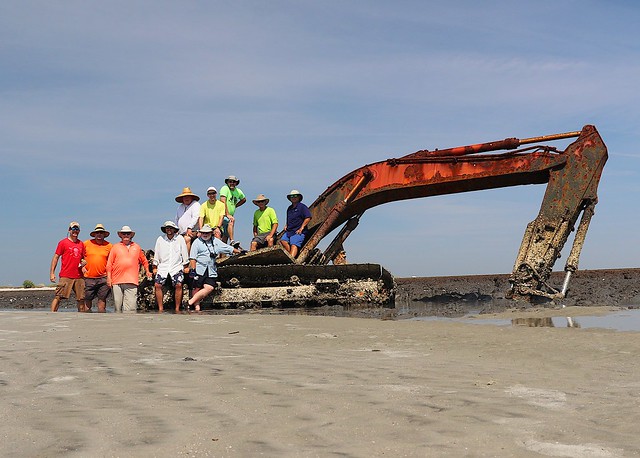
There was no respite from the heat. I walked back the mile to the boats with my feet mostly in the surf, trying to cool down.
Back at the boats it was still miserable, and it was getting crowded. Several more boats arrived while we were hiking and others were pulling up. They all seemed to know each other. Matt set up the stove and got lunch underway while we tried to cool off in the water.
Then it was time for lunch.
More boats were arriving and it was getting quite crowded. It was time for us to leave. Plus, we had delayed long enough for the tide to change. We needed to head out if we were going to have a favorable current.
This is where things really started to go downhill for me. I was delayed because I thought I’d dropped my camera. Then the cable on my rudder broke. Finally, the GoPro adhesive mount gave way. I was frazzled and on the verge of heat exhaustion.
It was a slog back but I kept at it. Without a functioning rudder my big boat was a point and shoot. I was expending more energy than I should just keeping it on track. Even with navigation problems and as tired as I was, I was making good time. I don’t think I took any photos along the way, pausing only to re-hydrate.
When we got back to the landing the gnats were back, so I donned my bug net. Before loading boats or anything else I just sat in the car with the AC going for a bit.
Our total trip ran 15 miles – 13 miles paddling and 2 miles hiking, all in 100º heat.
Once loaded I said my goodbyes and headed pretty much straight back home. It had been a long, hard trip and I had to be at church early the next morning.

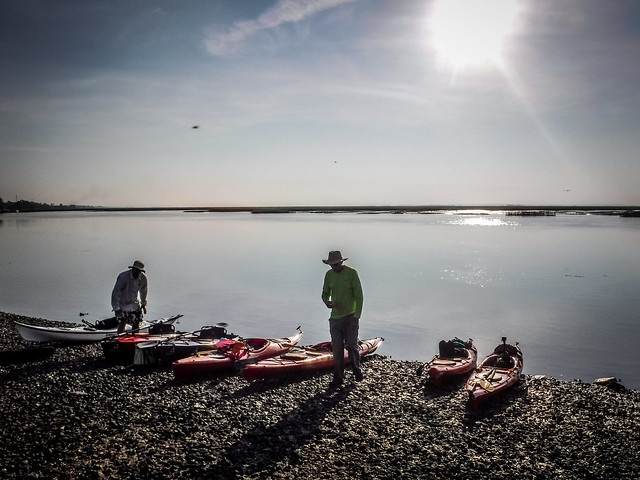
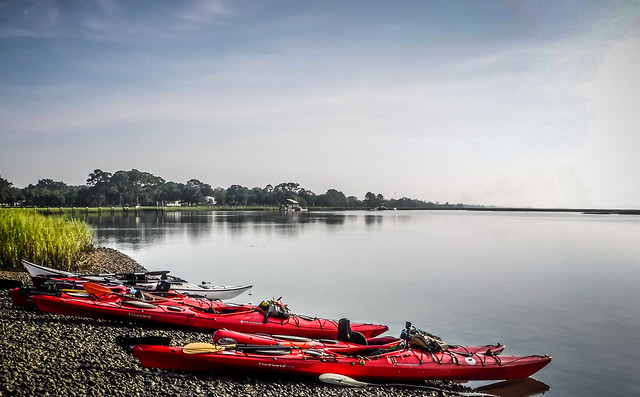




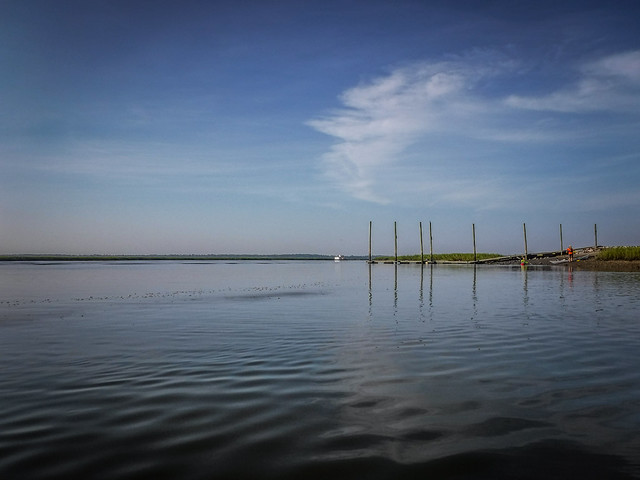




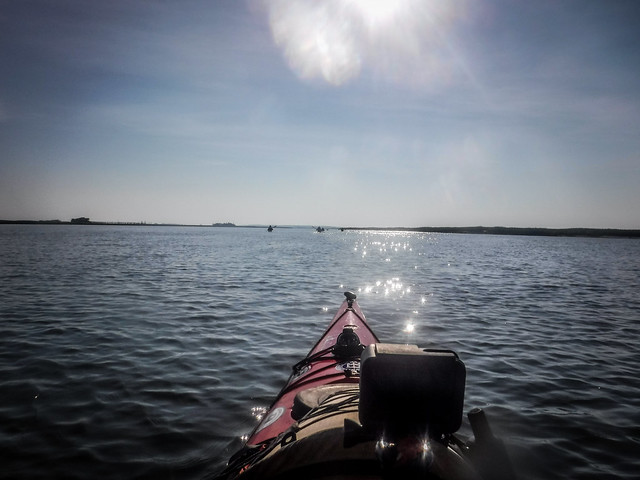




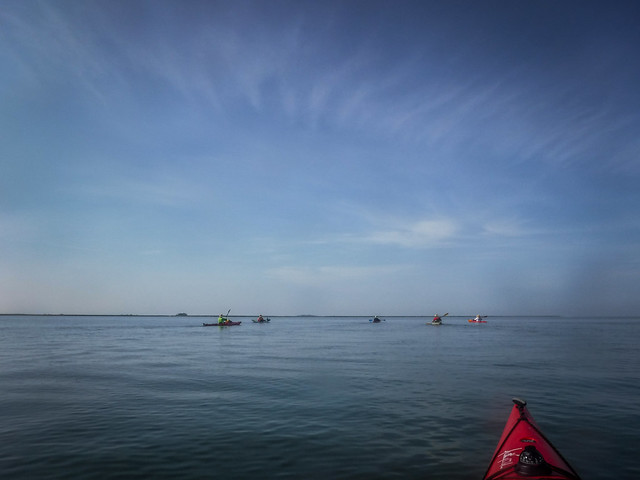

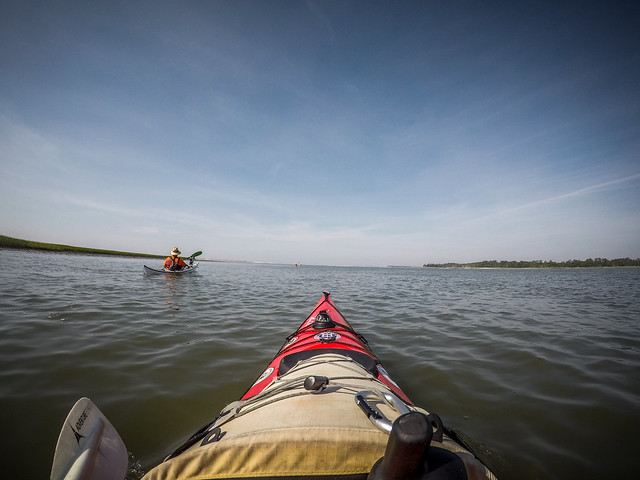


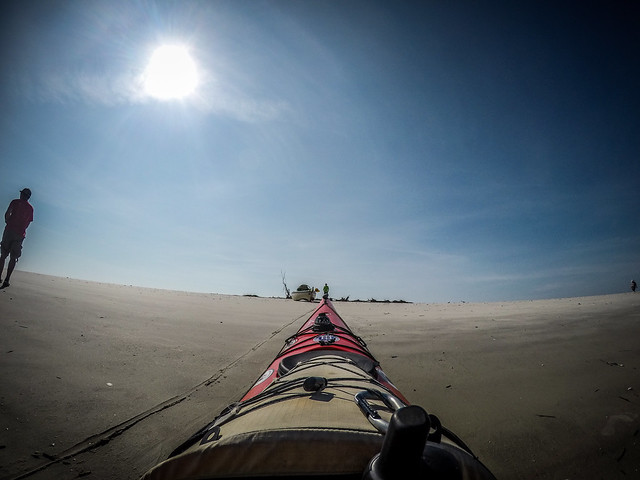
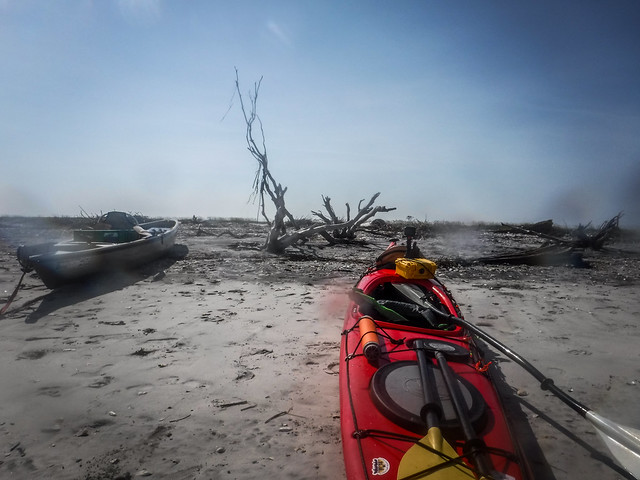





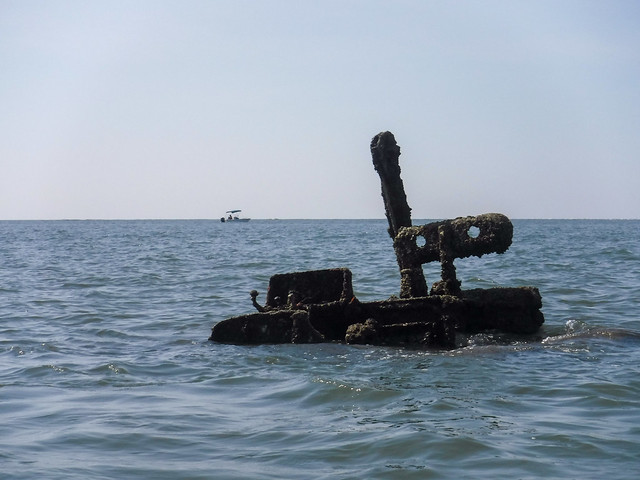















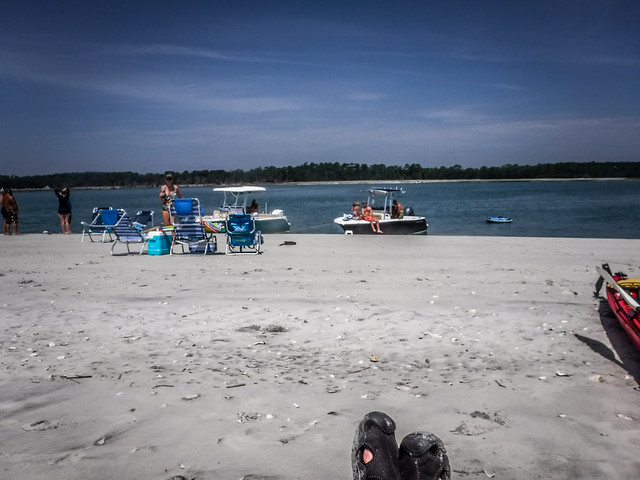


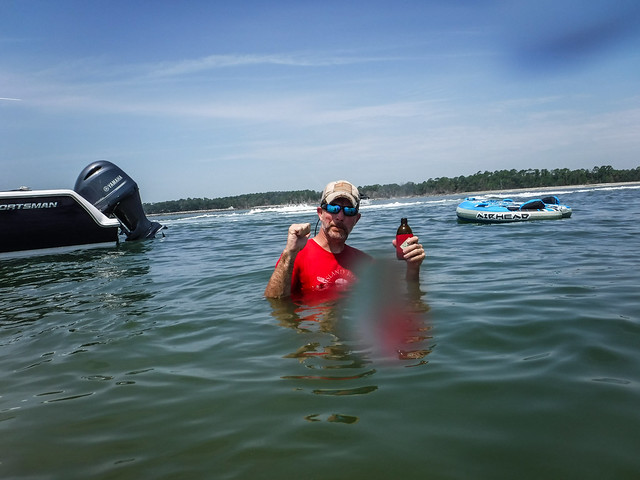
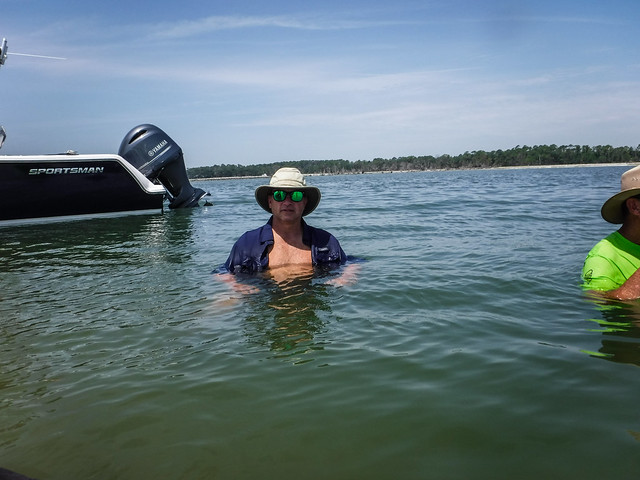
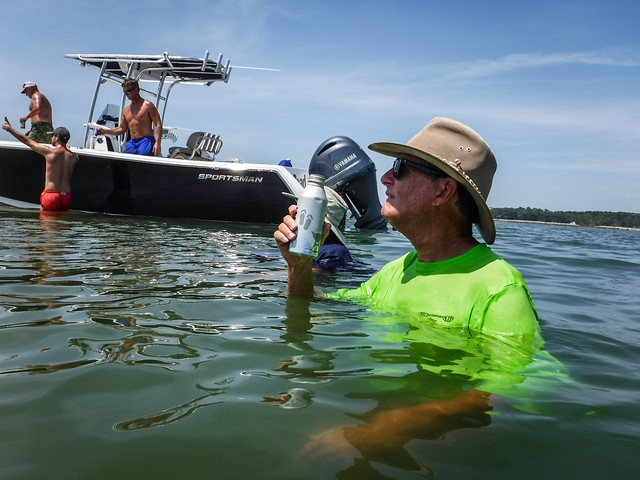






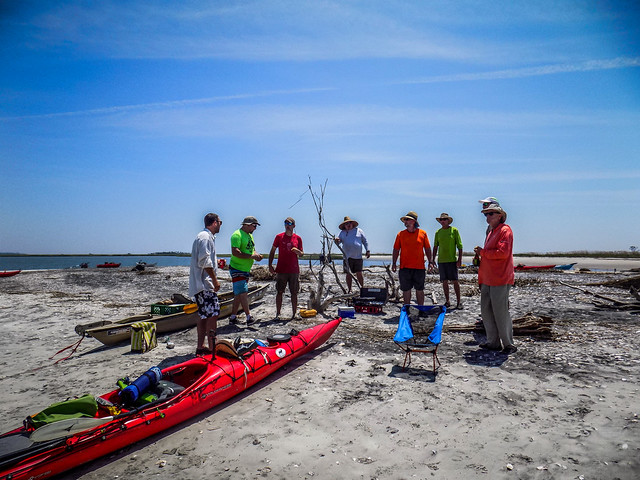
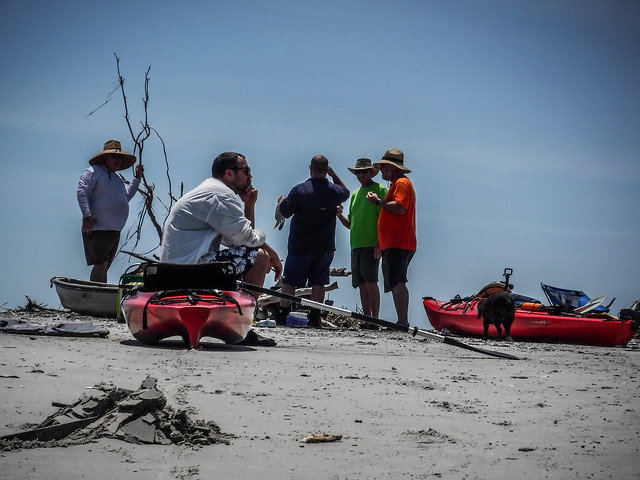




Do you purposely take pictures or do you have a GoPro mounted on your chest that’s always taking pictures?
Both. I have a waterproof camera that I use for specific shots. I also have a GoPro mounted to the kayak itself. The GoPro is set to do time-lapse shots at one image every ten seconds. I used to do full video, but I found that I wasn’t using the video. It was just taking up storage space. Now I just do time-lapse with an occasional video.
Thank you!
Capers is not for the faint of heart. Plan on at least a long weekend trip, and know your paddling limits before committing to something you can t handle. If you re unsure of paddling out to the island, make arrangements to borrow a jon boat, or contact Barrier Island Eco Tours. They have access to a ferry, but only for parties of seven or more. This is an incredible island that is certainly one of the more unique places to be found on our coast, and there s no better time to visit it than now.